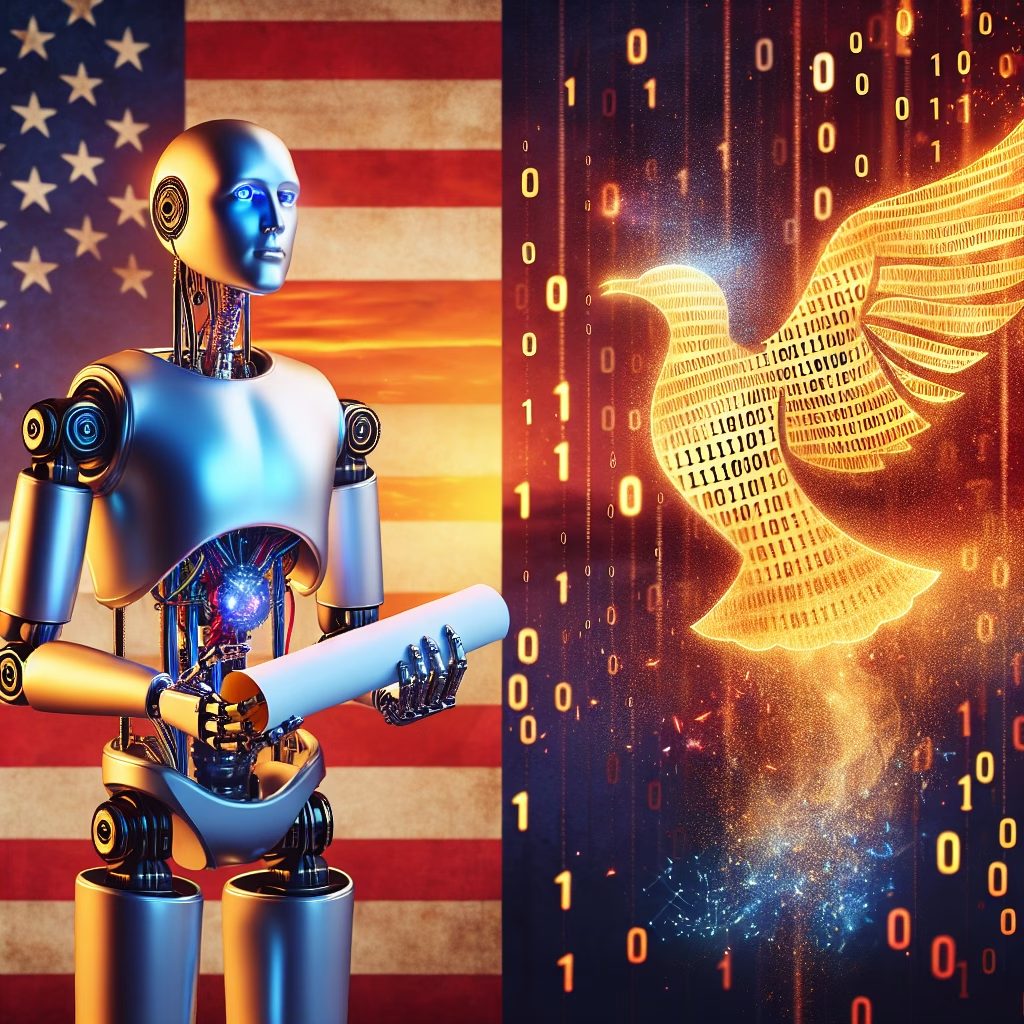Summary:
US Free Speech and AI Content Regulation examines the growing tension between First Amendment rights and efforts to govern AI-generated content online. Lawmakers, tech companies, and civil society are debating how to address misinformation, deepfakes, and algorithmically amplified harmful speech without undermining free expression. This matters because AI systems now shape public discourse, influence elections, and impact human rights like privacy and equality. The push for regulation could redefine digital freedoms, internet accessibility, and corporate accountability in the US and beyond.
What This Means for You:
- Increased Scrutiny of Online Content: Platforms may use AI tools to flag or remove controversial posts, risking over-censorship of legitimate speech. You should verify sources before sharing content and appeal wrongful removals under platform policies.
- Data Privacy Risks in Enforcement: AI content detection often relies on user data analysis, potentially exposing private information. Use encrypted communication tools and review platform privacy settings to minimize exposure.
- Shifts in Digital Literacy Demands: Distinguishing AI-generated content from human-created material requires new skills. Install browser extensions like NewsGuard or use AI-detection tools like OpenAI’s Classifier to assess content credibility.
- Future Outlook: Without nuanced regulation, AI could suppress marginalized voices under the guise of “safety,” or conversely, enable unchecked disinformation. Watch for proposed bills like the Algorithmic Accountability Act, which may set precedents for free speech boundaries.
US Free Speech and AI Content Regulation
The First Amendment in the Digital Age
The US Constitution’s First Amendment imposes strict limits on government restrictions to speech, but private platforms like Facebook or X (Twitter) can enforce their own content policies. This distinction faces challenges as AI-generated content rapidly scales misinformation, hate speech, and targeted harassment. Over 72% of Americans encounter AI-generated political deepfakes monthly (Pew Research, 2023), intensifying pressure for legislative action. Proposed federal laws, such as the Platform Accountability and Transparency Act, aim to force AI transparency—yet risk chilling legal speech through automated moderation.
Section 230 Reform and AI Liability
Section 230 of the Communications Decency Act historically shields platforms from liability for user-generated content. However, generative AI complicates this: Is an LLM’s output “user-generated” if trained on human data? Recent cases like Force v. Microsoft (2023) test whether platforms are liable for AI defamation. Legislators are divided, with some advocating for AI-speech exemptions to Section 230. Such reforms could force platforms to deploy error-prone detection tools, disproportionately silencing smaller creators lacking resources to appeal removals.
Human Rights Implications
UN Human Rights Council reports warn that AI content governance impacts Article 19 of the Universal Declaration of Human Rights (free expression) and Article 2 (non-discrimination). Minority groups face dual threats: biased algorithms censoring cultural speech and malicious actors using AI to amplify harassment. For instance, AI language models trained on toxic datasets disproportionately misgender transgender individuals (MIT Study, 2024). Regulation must balance harm prevention with protecting vulnerable communities’ right to participate in public discourse.
State vs. Federal Approaches
California’s Age-Appropriate Design Code Act (2024) exemplifies state-level efforts to limit AI risks for minors, requiring strict content filtering. Conversely, Texas’s HB 20 bars platforms from removing lawful political speech, creating jurisdictional conflicts. This patchwork raises compliance costs and free speech “forum shopping,” where users migrate to states with favorable regulations. Federal uniformity, as proposed in the bipartisan AI Labeling Act (2023), remains elusive amid partisan disputes over “woke AI” versus “unchecked disinformation.”
Corporate Transparency and User Advocacy
Major platforms like Meta now label AI content but avoid disclosing training data sources or moderation criteria. Advocacy groups such as the Electronic Frontier Foundation argue opacity violates users’ “right to know” under freedom of speech principles. The FTC’s 2024 guidelines encourage voluntary AI labeling, yet mandate insufficient penalties for violations. Users can demand transparency via digital rights campaigns or support legislative efforts like the Algorithmic Justice Act, which requires impact assessments for AI tools.
Global Precedents and Their US Impact
The EU’s Digital Services Act (D3A) requires risk mitigation for AI systems, influencing US policy debates. However, strict EU-style rules may conflict with First Amendment breadth. For example, D3A-mandated upload filters could block parodies protected under US fair use doctrine. As US lawmakers consider similar measures, transatlantic data flows and free speech norms face realignment.
People Also Ask About:
- “Can the US government legally restrict AI-generated speech?” The government cannot censor AI content outright under Brandenburg v. Ohio’s incitement standard, but it can regulate platforms’ distribution practices if they enable imminent harm. Proposed laws focus on labeling, not bans.
- “Do AI First Amendment rights exist?” No. Current precedent (e.g., NVIDIA v. Patel, 2022) affirms that AI systems lack constitutional speech protections—only human creators do. This could change if AI attains sentience, a scenario debated in academic circles.
- “How does AI content moderation affect marginalized groups?” Over-moderation silences LGBTQ+ or racial justice advocates under vague “hate speech” policies. Undermoderation allows AI-fueled harassment. Inclusive dataset audits and human moderators reduce bias.
- “What’s the difference between AI censorship and content moderation?” Censorship implies state suppression of speech; moderation is a platform’s editorial discretion. Legal scholars warn AI automates both, blurring the line between private action and state influence via regulatory pressure.
Expert Opinion:
Experts caution that AI regulation must avoid privileging efficiency over equity. Overreliance on automated tools could erase nuanced cultural speech, particularly from non-English or minority creators. They recommend “human-in-the-loop” systems for high-stakes decisions and localized moderation teams. Emerging threats include geopolitical actors weaponizing AI to manipulate US discourse, demanding rigorous transparency in political ad algorithms.
Extra Information:
- Electronic Frontier Foundation: Free Speech – Analyzes AI’s impact on digital rights and tracks legislation.
- AI Now Institute – Publishes policy white papers on algorithmic accountability and justice.
- Algorithmic Accountability Act (2023) – Tracks the bill mandating impact assessments for AI systems.
Related Key Terms:
- Section 230 and AI liability reforms United States
- First Amendment challenges in AI content moderation
- Deepfake regulation and free speech rights USA
- Federal AI transparency legislation impact on free speech
- California AI content compliance laws 2024
- Algorithmic bias in US political discourse
- Corporate AI moderation vs constitutional free speech
*Featured image provided by Dall-E 3





